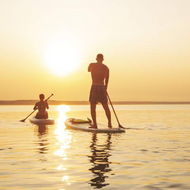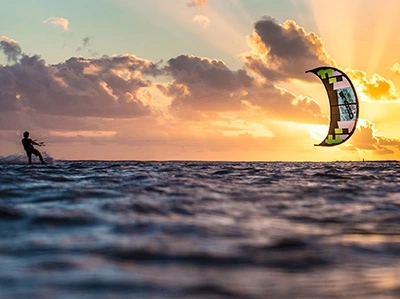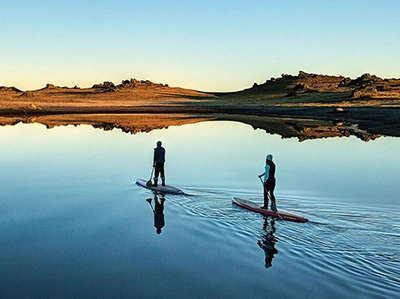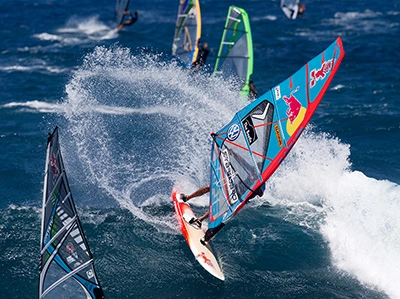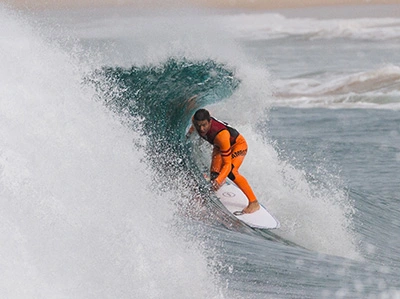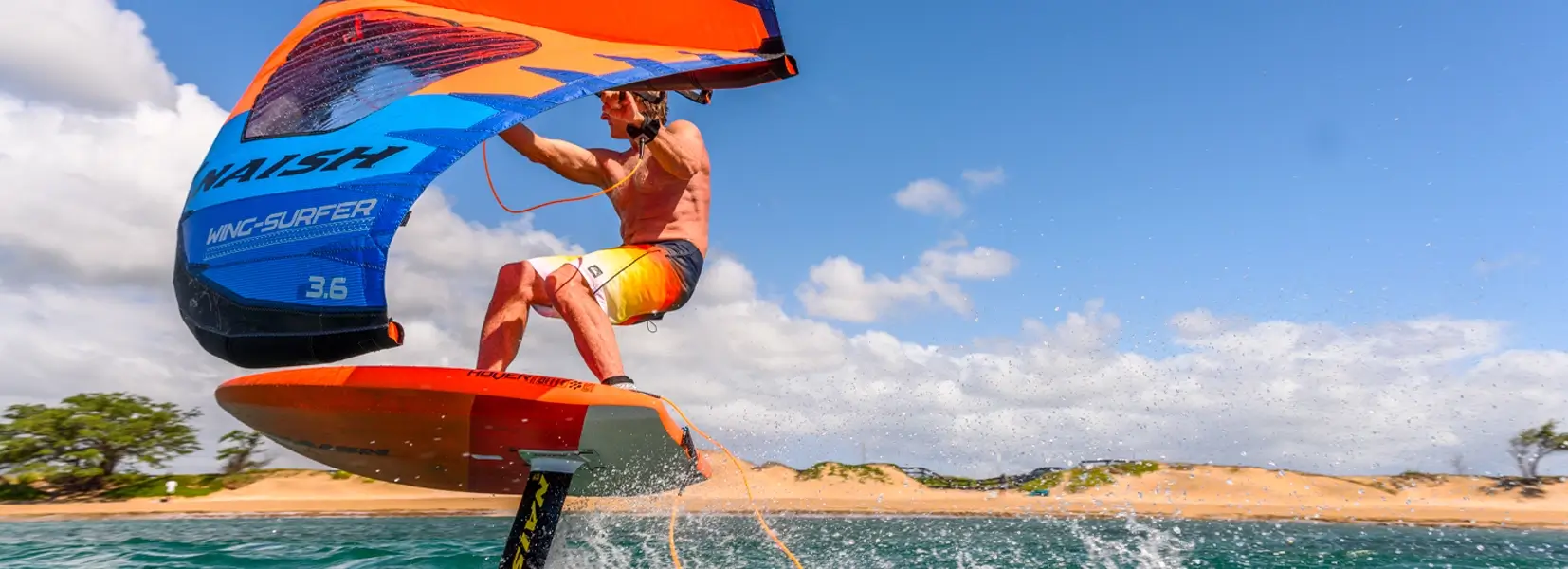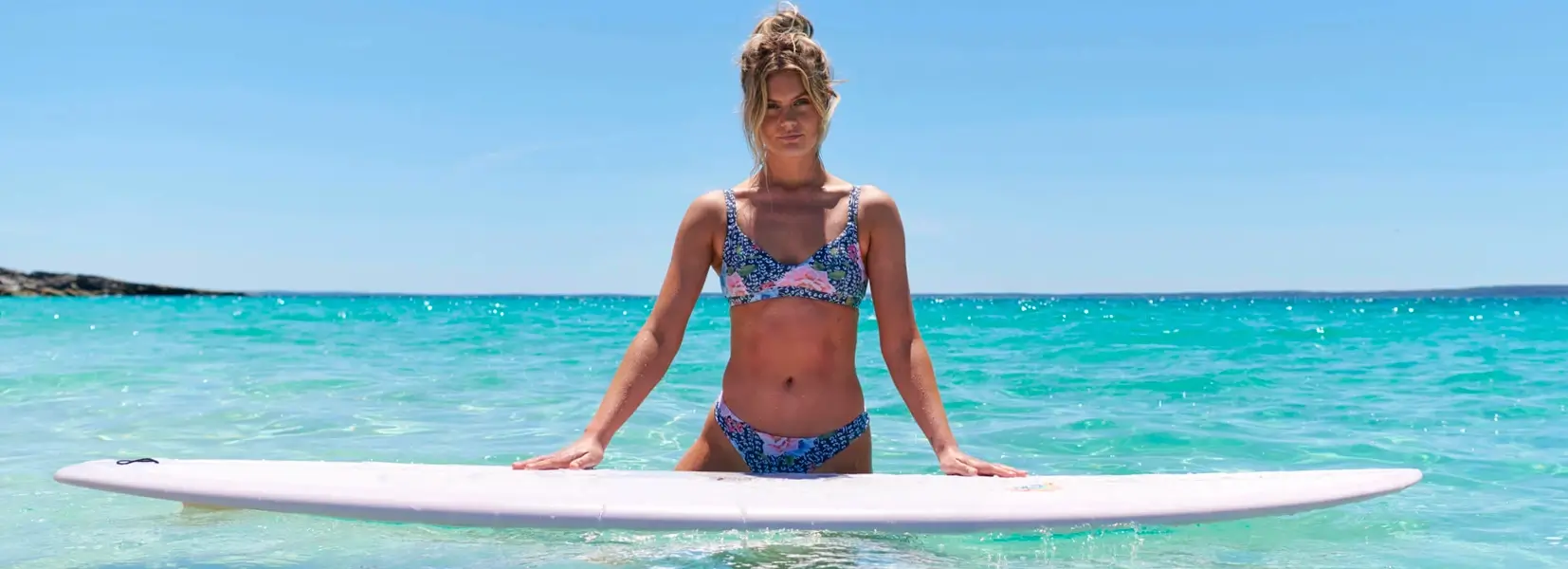24th Sep 2025
Beginner's SUP Buying Guide: Finding the Right Volume, Shape & Thickness in New Zealand (2025)

New to paddleboarding? This guide explains board volume, shape and thickness for New Zealand conditions - so you can pick your first board with confidence.
What is Stand Up Paddleboarding (SUP)?
Stand Up Paddleboarding (SUP) is a simple and accessible water activity where you stand on a board and use a paddle to move. It works on flat water such as lakes and harbours, and it also works in small surf. SUP is popular because it is easy to learn, low-impact exercise, and a practical way to explore water and shoreline scenery.
If you are new to this, the main decision is which board to buy. This guide explains the three most important things to consider - volume, shape and thickness - in plain language so beginners can make a confident choice.
What Does SUP Volume Mean?
Board volume is how much air or space the board holds, measured in litres. Volume determines how much weight the board can float - more volume means more float and stability.
Beginner rule of thumbYour weight (kg) × 2 = suggested SUP volume (litres)
Example: If you weigh 75 kg, a 150 L board is a good starting point. Add more volume if you plan to carry a child, a pet, or lots of gear.
Practical note - volume is the single biggest factor in initial stability. If in doubt, choose slightly more volume for confidence on the water.

SUP Volume Guide for Beginners in New Zealand
| Rider Weight | Recommended Volume | Best Board Type | Common Use |
|---|---|---|---|
| < 60 kg | 120 - 160 L | All-round / small surf | Teens, light adults, short trips |
| 60 - 90 kg | 150 - 200 L | All-round / touring | Most adults on lakes and harbours |
| 90 kg + | 180 - 250 L | Wide / touring | Heavier riders and extra stability |
Board Shapes in Plain Terms
There are several board shapes. For beginners, these three types cover most needs.
All-round boards
- Wide, stable and easy to turn.
- Good for lakes, harbours and light surf.
- Best choice for most first-time paddlers.
Touring boards
- Longer and narrower to glide better over distance.
- Ideal for longer paddles and light touring.
- Require a little more balance than an all-round board.
Surf boards
- Shorter and shaped to ride waves and turn quickly.
- Not recommended as a first board because they are less stable.
If you are starting out, an all-round or longboard SUP usually gives the best combination of stability and portability. See our SUP range - Shop SUPs.
Does Board Thickness Matter?
Inflatable boards commonly come in 4-inch and 6-inch thickness. Thickness affects stiffness - thicker boards feel stiffer and more stable.
- 4-inch - lighter and good for lighter riders or compact storage.
- 6-inch - stiffer, more stable and often better for adult riders and carrying gear.
If you weigh 70 kg or more, a 6-inch board is recommended to improve stability and stiffness.

Inflatable vs Hard Boards - Quick Comparison
| Type | Pros | Cons | Good For |
|---|---|---|---|
| Inflatable | Portable, durable, forgiving, easy to store | Slightly less glide at high speed | Beginners, families, travellers |
| Hard | Better performance and glide | Heavier, fragile, harder to transport | Experienced paddlers and surf specialists |
NZ Boardstore specialises in inflatable SUPs - a practical and safe starting point. Explore inflatable SUPs.
Beginner Checklist - What to Bring
- Adjustable paddle - choose a paddle the right length for your height.
- Safety leash - keeps your board nearby if you fall.
- Personal flotation device (PFD) - required in some waterways.
- Pump and carry bag - for inflatable boards.
- Sun protection - sunscreen, hat and protective clothing.
How to Stand on a SUP for the First Time - Step by Step
- Start in calm, waist or chest-deep water with a wide, stable board.
- Kneel in the centre and practise a few paddle strokes to feel balance.
- Bring one foot up, then the other - place feet shoulder-width apart.
- Keep knees soft, look forward and take steady paddle strokes.
- If you fall, relax, swim to the board and try again - it is part of learning.
Most learners feel steady after 1-2 sessions. Choosing the right volume and width helps you progress faster.

Beginner SUP Picks and Try-before-you-buy
Not ready to buy? We provide rentals and demo sessions so you can try a board on the water before making a purchase. View rental options.
Frequently Asked Questions
Q1: What size SUP is best for beginners?
Most beginners do well with a 150-200 L board. Use the volume table above for a quick match to your weight and planned use.
Q2: Is a 6-inch SUP better than a 4-inch?
Yes - a 6-inch inflatable is stiffer and more stable, which helps new paddlers feel more confident on the water.
Q3: Inflatable vs hard SUP - which is better for beginners?
Inflatables are generally better for beginners because they are forgiving, portable and safer during falls. Hard boards suit more advanced or surf-focused riders.
Q4: Where can I paddle SUP in New Zealand?
Good beginner spots include sheltered harbours and calm lakes. Examples - Orewa, Mt Maunganui, Rotorua, Wanaka, and calm inside points of Raglan.
Q5: How much should I spend on a beginner SUP?
Quality beginner boards from trusted brands and local stock at NZ Boardstore typically range from NZ$2000 to NZ$2500. Cheaper boards can be tempting but may lack longevity and support.
